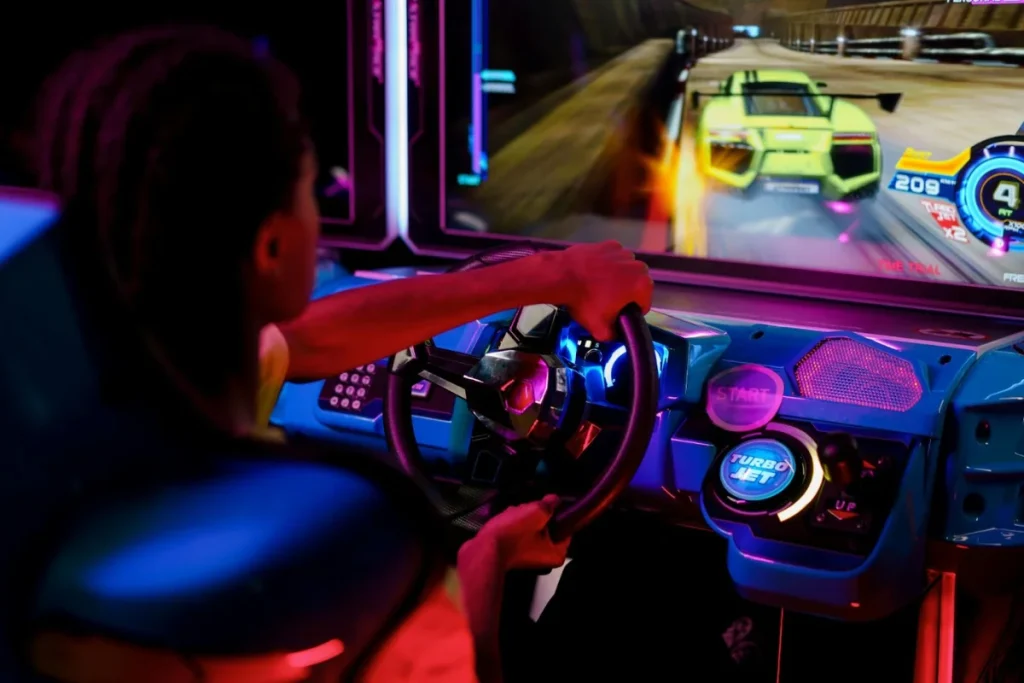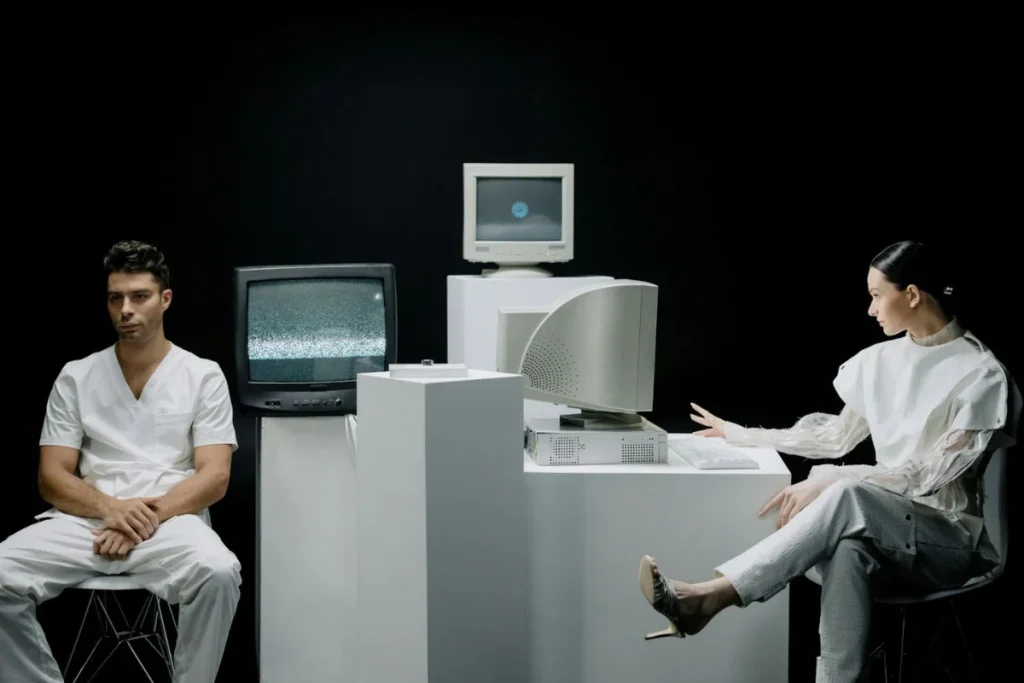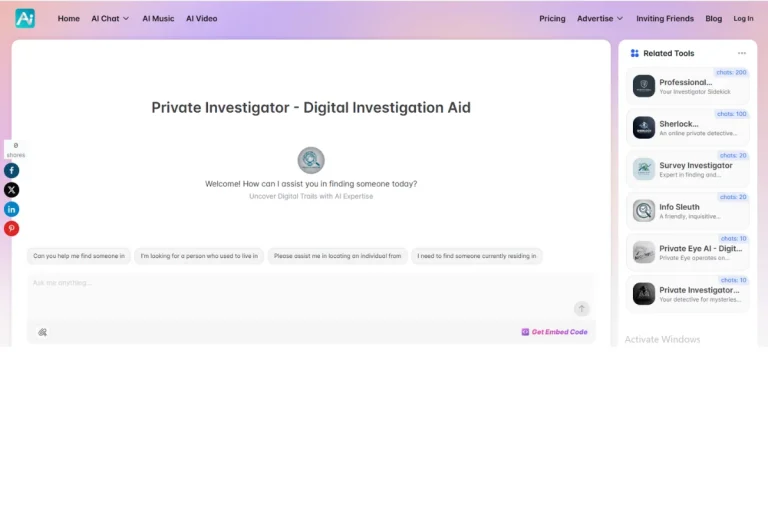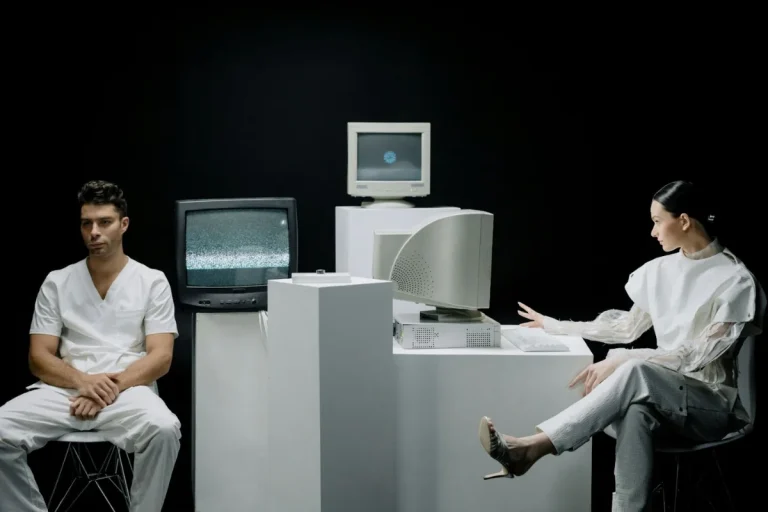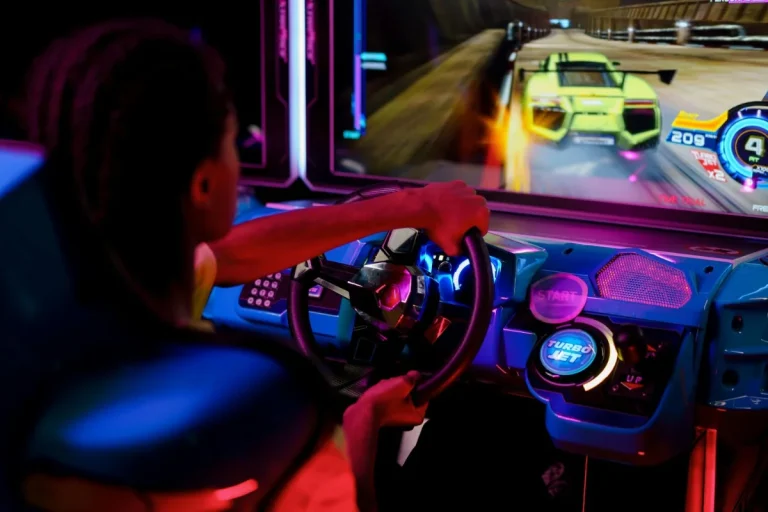How to Optimize Gaming Laptop for VR: Boost Your Performance Now

Illia Smoliienko – Last Updated: May 19, 2025
Smooth and immersive Virtual Reality (VR) gaming offers an immersive experience, but it requires a high-performance gaming laptop to run smoothly. Without proper optimization, you may experience lag, frame drops, and overheating. In this guide, we’ll discuss how to optimize your gaming laptop for VR gaming and ensure a seamless experience.
Gaming Laptop for VR
1. Verify Your Gaming Laptop’s VR Compatibility
Before diving into optimizations, ensure your gaming laptop meets the essential VR hardware requirements. VR gaming demands significant processing power, so having a capable system is crucial. Here are the recommended minimum specs:
| Specification | Minimum Requirements | Recommended Requirements |
| GPU | NVIDIA GTX 1060 / AMD RX 480 | NVIDIA RTX 3060 or higher |
| CPU | Intel Core i5-4590 / AMD Ryzen 5 1500X | Intel i7 or AMD Ryzen 7 |
| RAM | 8GB | 16GB or more |
| Storage | HDD | SSD (NVMe preferred) |
| USB Ports | USB 3.0 | USB 3.0 / USB-C |
| Operating System | Windows 10 | Windows 10 or newer |
To ensure your laptop is VR-ready, use tools like SteamVR Performance Test or Oculus Compatibility Tool, which analyze your system’s ability to handle VR games and applications. If your laptop falls short, consider upgrading critical components for a seamless VR gaming experience.
2. Update GPU Drivers
Graphics processing power plays a vital role in delivering VR gaming. Outdated GPU drivers can cause frame drops, stuttering, or even compatibility issues with VR headsets. To ensure optimal performance and stability, always keep your graphics drivers updated. Here’s how:
- Visit the official website of your GPU manufacturer (NVIDIA or AMD) to download the latest drivers.
- Use dedicated software like NVIDIA GeForce Experience or AMD Radeon Software to automatically check for and install updates.
- Check Windows Update for additional driver updates that may enhance system compatibility.
- Enable automatic updates within your GPU software to ensure you’re always running the latest version.
Regularly updating your drivers improves frame rates, reduces latency, and ensures your gaming laptop stays optimized for the latest VR games and applications.
3. Optimize VR Graphics Settings
Fine-tuning your graphics settings can significantly enhance VR gaming performance by reducing latency and maintaining higher frame rates. Adjust the following settings to optimize your experience:
- Lower resolution scaling if the game allows, reducing GPU workload while maintaining visual clarity.
- Reduce anti-aliasing to ease the strain on the GPU without drastically affecting image quality.
- Disable unnecessary visual effects like motion blur, ambient occlusion, and depth of field to improve responsiveness.
- Enable performance-enhancing modes such as NVIDIA DLSS or AMD FSR, which use AI upscaling to boost frame rates while preserving sharpness.
- Adjust in-game refresh rates and supersampling to balance performance and visual fidelity based on your laptop’s capabilities.
Regularly experimenting with these settings can help achieve a smoother, lag-free VR gaming experience tailored to your laptop’s hardware.
4. Manage System Resources for Optimal VR Performance
VR gaming requires substantial system resources, so minimizing background processes can prevent performance bottlenecks. Freeing up memory and processing power ensures smoother gameplay and reduces lag. Here’s how to optimize system resources:
- Close unnecessary applications such as web browsers, music players, and background software that consume CPU and RAM.
- Use Task Manager (Ctrl+Shift+Esc) to identify and disable high-memory or CPU-intensive applications running in the background.
- Enable Windows Game Mode to automatically allocate system resources toward gaming while limiting non-essential tasks.
- Disable startup programs that aren’t required for VR gaming, reducing system load at boot-up.
- Turn off unnecessary background services like auto-updates and cloud sync features while gaming.
By managing system resources efficiently, you can maximize frame rates, minimize latency, and create a more immersive VR gaming experience on your laptop.
5. Optimize Laptop Cooling
Overheating can lead to performance throttling, lag, and long-term damage to your gaming laptop’s hardware. Proper cooling ensures stable VR gameplay and extends the lifespan of your components. Here’s how to keep your laptop cool:
- Use a cooling pad to enhance airflow and reduce overall system temperature during intensive VR sessions.
- Regularly clean dust from vents and fans using compressed air to prevent blockages that can hinder airflow.
- Apply high-quality thermal paste to the CPU and GPU to improve heat dissipation and maintain lower operating temperatures.
- Undervolt your CPU and GPU using tools like ThrottleStop or MSI Afterburner to reduce heat generation without compromising performance.
- Keep your laptop on a hard, flat surface to prevent airflow restrictions caused by soft surfaces like beds or couches.
- Monitor temperatures using software like HWMonitor or Core Temp to ensure your system stays within safe operating limits.
Implementing these cooling strategies helps maintain consistent VR performance, prevents sudden slowdowns, and enhances the overall longevity of your gaming laptop.
6. Upgrade Laptop Hardware
If your gaming laptop struggles with VR games, upgrading key hardware components can dramatically improve performance and reduce lag. Here are some effective hardware upgrades to consider:
- Increase RAM
Upgrading from 8GB to 16GB or 32GB enhances multitasking, reduces stuttering, and provides a smoother VR experience. - Switch to an SSD
Replacing an HDD with an NVMe or SATA SSD speeds up game load times, minimizes frame drops, and improves system responsiveness. - Use an External GPU (eGPU)
If your laptop supports Thunderbolt 3 or 4, an eGPU can significantly boost graphical performance for demanding VR applications. - Upgrade to a higher refresh rate external display.
Some VR games perform better with a 120Hz or 144Hz monitor for smoother gameplay. - Consider a better cooling solution.
Advanced cooling solutions like liquid metal thermal compounds can further enhance performance and longevity.
These upgrades help future-proof your laptop, ensuring it meets the latest VR gaming demands while delivering a seamless and immersive experience.
7. Use VR Performance Optimization Tools
Optimizing your VR settings with specialized tools can help improve frame rates, reduce lag, and enhance overall performance. These tools allow you to fine-tune your system for a more immersive and responsive VR gaming experience:
- Oculus Debug Tool
Adjusts rendering settings, such as ASW (Asynchronous Spacewarp) and encoding bitrate, to maintain smoother frame rates. - SteamVR Settings
Lower supersampling, tweak motion smoothing, and optimize performance settings to reduce latency and boost responsiveness. - FPS Monitoring Software
Tools like MSI Afterburner, FRAPS, or HWMonitor help track GPU performance, temperatures, and frame rates in real-time. - Process Lasso
Manages CPU priorities, ensuring your VR game gets maximum system resources. - VR Performance Toolkit
A third-party tool that enhances image clarity and upscaling for better visual quality without sacrificing performance.
By leveraging these optimization tools, you can customize your VR settings to match your laptop’s capabilities, ensuring a seamless and lag-free gaming experience.
8. Ensure a Stable Internet Connection
For online VR gaming, a poor internet connection can cause lag and disconnections. Optimize your connection by:
- Using an Ethernet cable instead of Wi-Fi.
- Upgrading to a high-speed internet plan.
- Closing bandwidth-hogging applications like video streaming services.
9. Adjust Power Settings
Gaming laptops often throttle performance in battery mode. To maximize performance:
- Set power mode to ‘High Performance’ in Windows settings.
- Disable power-saving features that limit CPU and GPU performance.
- Keep your laptop plugged in while gaming.
10. Is Your Laptop VR-Ready? Here’s How to Check
Before tweaking settings, you need to ensure your laptop can run VR titles. Not all gaming laptops are created equal.
Minimum VR Requirements (2025 Standards):
- GPU: NVIDIA GTX 1660 Ti, RTX 2060 or better; AMD RX 5700 or newer
- CPU: Intel Core i5/i7 or AMD Ryzen 5/7 – 8th Gen or newer
- RAM: 8GB minimum (but 16GB+ is highly recommended)
- Storage: SSD preferred for faster load times (NVMe SSDs are ideal)
- Ports: At least 1x USB 3.0, 1x HDMI or DisplayPort, and ideally USB-C for Oculus Link
Quick Tip: Download the SteamVR Performance Test to get a real-time compatibility check.
11. Keep Your Software & Firmware Updated
Think of updates like health potions for your system—they patch vulnerabilities, fix bugs, and boost performance.
Must-Update List:
- Graphics Drivers: Always get the latest from NVIDIA or AMD. Use GeForce Experience or AMD Software for notifications.
- VR Headset Firmware: Use your headset’s companion app (Oculus, SteamVR, etc.) to check for firmware updates.
- Motherboard & BIOS (Advanced): Visit your laptop manufacturer’s website to see if your BIOS or chipset drivers are outdated.
- Windows Updates: A stable OS is crucial—go to Settings > Update & Security and install the latest patches.
12. Power Up: Maximize Performance Modes
VR is resource-heavy, and battery-saving modes just won’t cut it.
Do This:
- Control Panel > Power Options > High Performance or Ultimate Performance
- In NVIDIA Control Panel > Manage 3D Settings, change Power Management Mode to Prefer Maximum Performance.
- Always keep your laptop plugged in while gaming in VR—power-saving modes activate when you’re on battery.
13. Clean Up Background Apps & Processes
Think of your laptop like a nightclub—you want only VIPs (aka your game and VR software) in the building.
What to Disable:
- Auto-syncing apps: Dropbox, OneDrive, Google Drive
- Streaming software: OBS, Discord overlay (unless you’re using it)
- Startup bloat: Open Task Manager > Startup tab > Disable non-essential apps
- Background tabs: Shut down Chrome, Spotify, and other RAM hogs
Turn on Windows Game Mode (Settings > Gaming > Game Mode) to prioritize system resources for your game.
14. Optimize In-Game and VR Headset Settings
Once your hardware is in check, tweak the actual VR settings for buttery-smooth gameplay.
In SteamVR or Oculus Settings:
- Lower render resolution or supersampling (start at 100% or 1.0x and go up slowly)
- Set the refresh rate to match your headset’s native rate (typically 90Hz or 120Hz)
- Use Asynchronous Spacewarp (ASW) for Oculus or Motion Smoothing for SteamVR to stabilize frame rates.
In-Game Settings:
- Reduce shadow quality, post-processing, and anti-aliasing
- Turn off motion blur and ambient occlusion.n
- Use Medium or High settings rather than Ultra.
Test one setting at a time to find the sweet spot between quality and performance.
15. Temperature Control: Keep It Cool
VR stress-tests your CPU and GPU like no other. Overheating can cause performance throttling, crashes, or frame drops.
Cooling Tips:
- Use a quality cooling pad (look for ones with multiple fans and adjustable height)
- Elevate the back of the laptop slightly to improve airflow.
- Clean your vents monthly using compressed air.
- Monitor temps with tools like HWMonitor, MSI Afterburner, or Open Hardware Monitor.
If your CPU is hitting 90°C+, consider undervolting it (with ThrottleStop) or adjusting fan curves in your laptop’s control center software.
16. Optimize Your Connections: USB, Display, & Network
VR headsets rely heavily on USB and video bandwidth. Don’t let poor connections hold you back.
Connection Tips:
- Plug your headset directly into your laptop’s native USB 3.0 ports.
- Avoid USB hubs unless they’re powered and rated for VR.
- Use HDMI or DisplayPort directly—no dongles if you can help it.
- For Oculus Link, invest in a certified high-speed USB-C cable (Oculus Link Cable and Anker Powerline+ are great options)
- Use wired Ethernet or strong 5GHz Wi-Fi if you’re using Air Link or Virtual Desktop.
Weak wireless = lag and artifacts. Always test your network before going wireless with VR.
Bonus Tips: Take Your VR Game to the Next Level
Here are some advanced tricks to elevate your VR experience even further:
- Enable Hardware-Accelerated GPU Scheduling: Settings > Display > Graphics Settings
- Use the Oculus Debug Tool or SteamVR Advanced Settings to fine-tune latency and resolution.
- Disable Windows notifications and pop-ups during VR sessions
- Keep your headset lenses clean and properly aligned to prevent eye strain.
- Use external sensors (if your headset supports them) for better trackin.g
- Invest in VR grips, facial interfaces, or head straps for better comfort and immersion.
Virtual Reality Has Come a Long Way
What used to be futuristic fantasy is now in our living rooms—or, in this case, right on your gaming laptop. Whether you’re gearing up for an epic battle in Asgard’s Wrath II, slicing beats in Beat Saber, or exploring new realities in VRChat, your hardware has to be in top shape to handle it all.
Gaming laptops today are powerful, but VR is demanding. This guide is your one-stop resource to optimize your laptop for smooth, immersive, and lag-free virtual reality gaming.
Final Thoughts: Make the Most of Your VR Setup
Optimizing a gaming laptop for VR isn’t just about technical tweaks—it’s about creating an immersive world where nothing breaks the experience. With the right settings, stable temperatures, and quality cables, your laptop can be a powerful VR machine.
Frequently Asked Questions

Explore the Best AI Tools & Expert Reviews in One Place
Showcasing the highest-quality AI tools, unbiased reviews, expert comparisons, and the latest insights from the world of Artificial Intelligence. Subscribe to stay informed and ahead in the AI revolution.
Related Articles
Related Solutions

Industrial
Monitoring and Asset Control for Industrial Environments
A comprehensive, secure IIoT platform for real-time monitoring, predictive maintenance, and remote asset control.
WIKA

Industrial
Monitoring and Asset Control for Industrial Environments
A comprehensive, secure IIoT platform for real-time monitoring, predictive maintenance, and remote asset control.
WIKA

Industrial
Monitoring and Asset Control for Industrial Environments
A comprehensive, secure IIoT platform for real-time monitoring, predictive maintenance, and remote asset control.
WIKA

Find Your IoT Solution
Explore our vetted selection of IoT solutions organized to help you easily find, evaluate, and adopt solutions that deliver business value.

IoT For All is creating resources to enable companies of all sizes to leverage IoT. From technical deep-dives, to IoT ecosystem overviews, to evergreen resources, IoT For All is the best place to keep up with what’s going on in IoT.
CONTENT
Webinars
Podcasts
Resources
EXPLORE
Home
Podcasts
Companies
Writers
ABOUT
About IoT For All
Our Team
Newsletter
Advertise
COMMUNITY
Meet the Community
Become a Contributor
Become a Partner
SUBMIT CONTENT
Login
Contact Us

